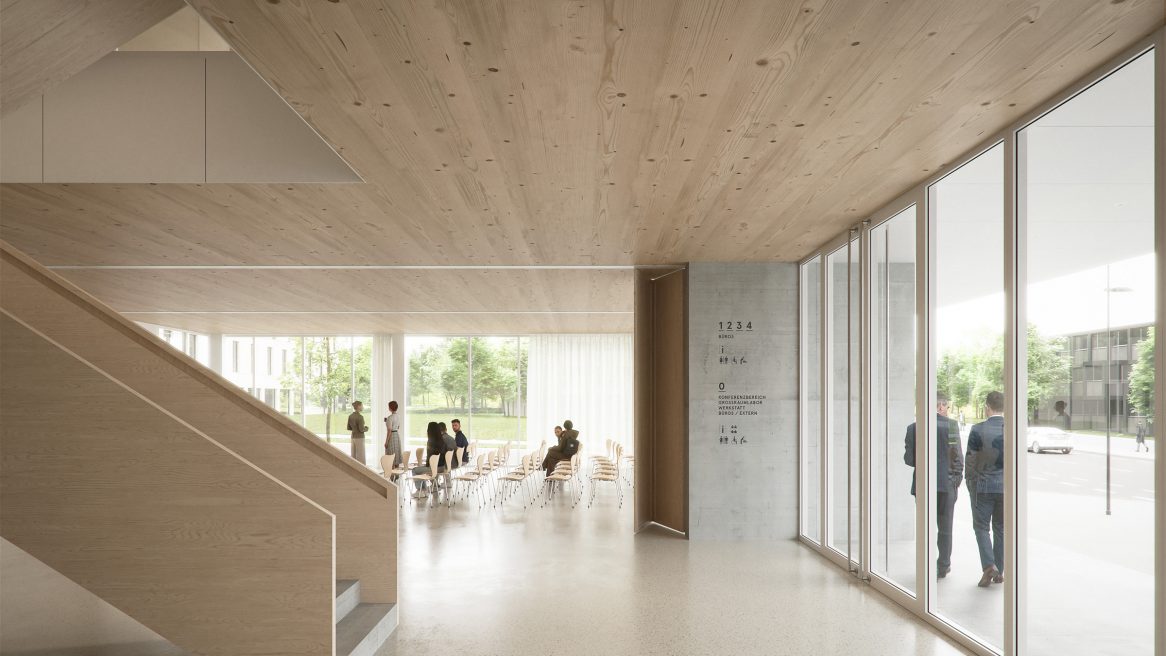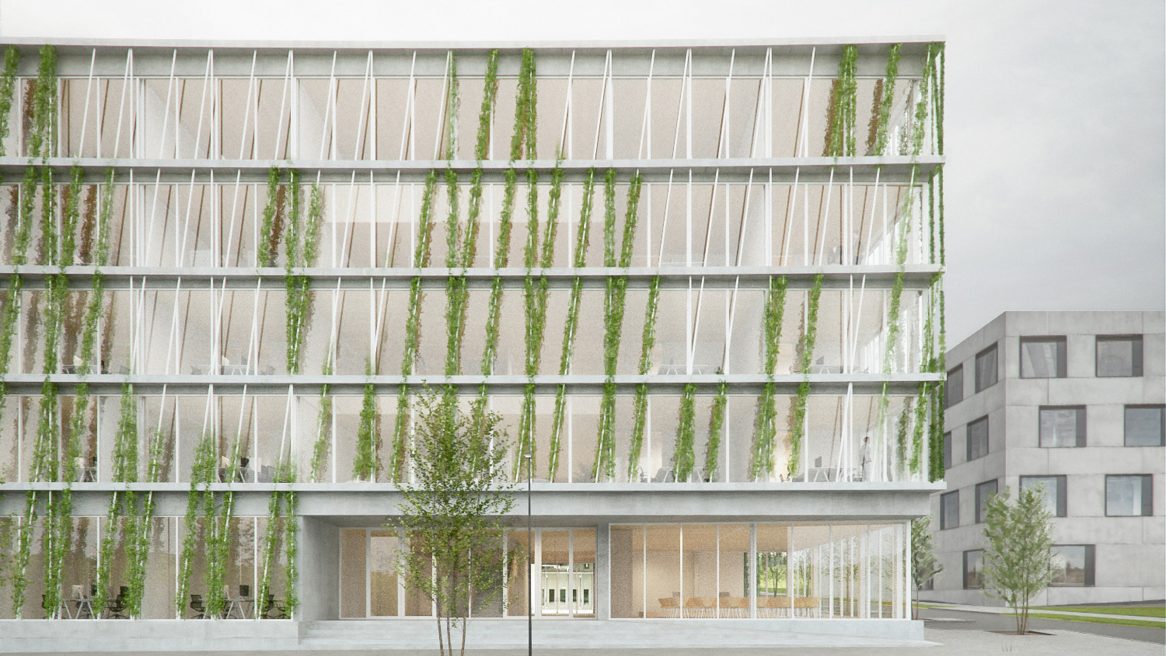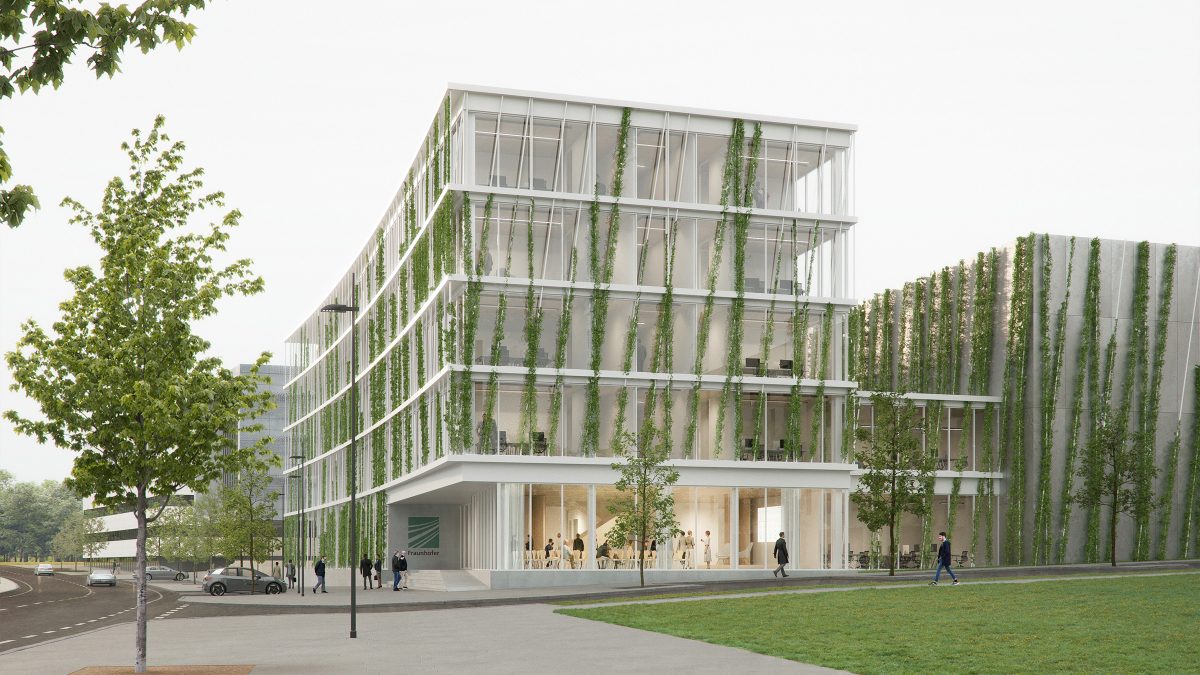
Center for Digital Energy
Fraunhofer Institute, Aachen
The Fraunhofer Center Digital Energy (ZDE) in Aachen is getting a climate-change-resistant building. The design by Sehw Architektur, which was awarded 1st place, makes the institute's applied research visible to the outside world. The prestigious five-storey hybrid timber building creates an identity-forming and attractive working environment for both employees and visitors. It provides spaces for new working environments, communication, knowledge transfer and testing arrangements in the research area. The building's urban setting connects it with its neighbours, while the transparent façade design creates a link between the interior and exterior. This transparency is continued in the interior. Visual relationships are a theme, ensuring permeability across the floors through atriums in the communication areas. The hall with heavy-duty drives and an overhead crane can be seen from the foyer. Seminar areas and foyer can be combined into one large space to present the institute's know-how to partners from business and academia.
“The building is innovative and smart.”
The upper floors are laid out with two parallel corridors flanking a permeable central zone offering places for communication. An area where IT hacker attacks are simulated is designed as a separate security area with its own internal access. On the roof of the intermediate building between the office and laboratory building and the testing hall, an accessible roof area is designed as a break area for the institute’s employees.
The building is innovative and smart. One example of innovation and intelligence is the green façade. The climbing supports, which overlap like a net in the facade, symbolise the dynamic networking of energy flows and at the same time use the water stored on the retention roof to irrigate the plants. The greenery on the façade serves to provide shade and create a healthy microclimate.
To ensure cost-effectiveness and sustainability, the design aims for a high degree of prefabrication based on a grid with economical spans, avoids a basement, plans to use timber in mixed construction with glulam floor slabs and beams and to use materials that can be deconstructed, sorted by type and recycled. All of this contributes to the sustainability of the building for the purpose of sufficiency.

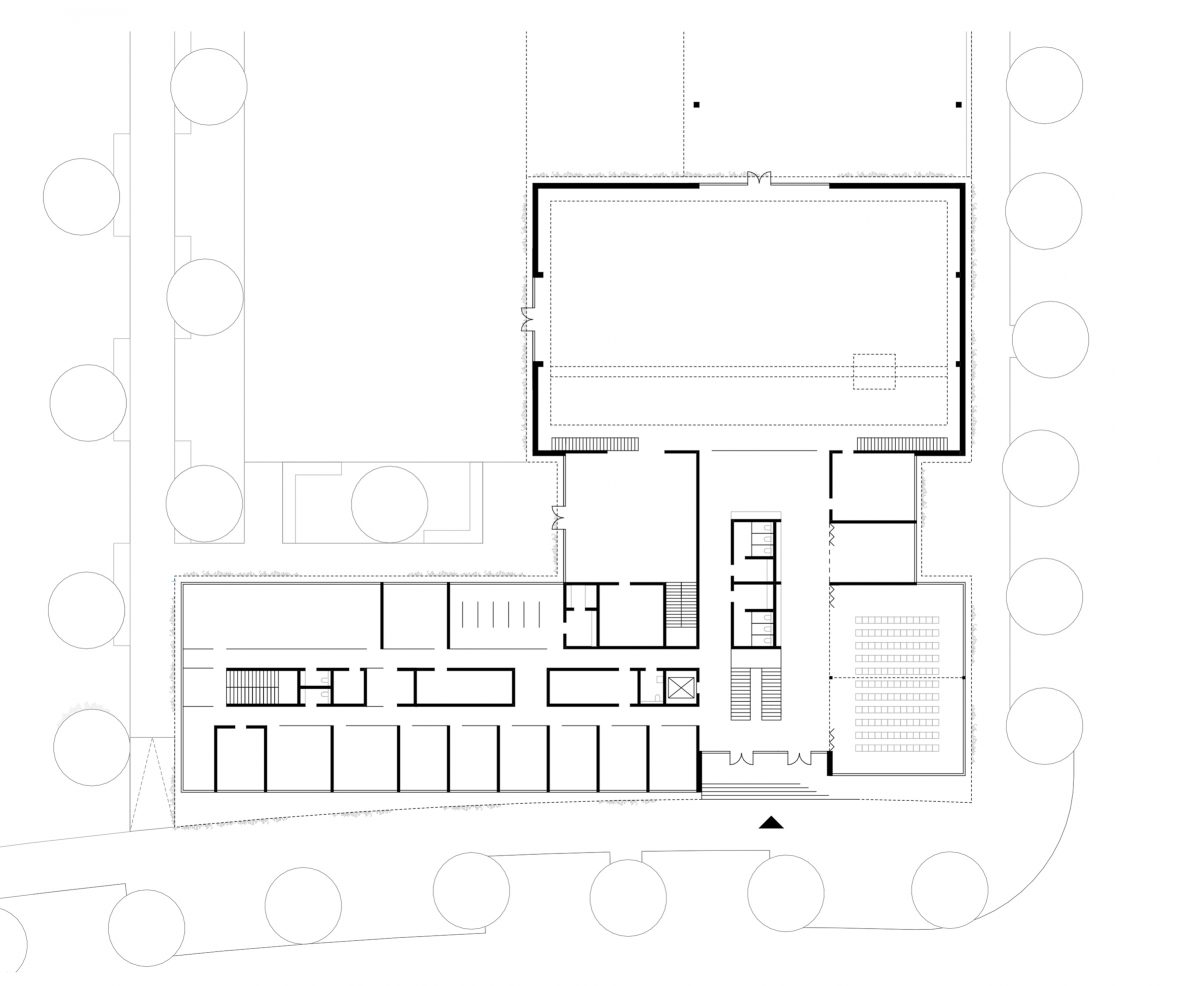

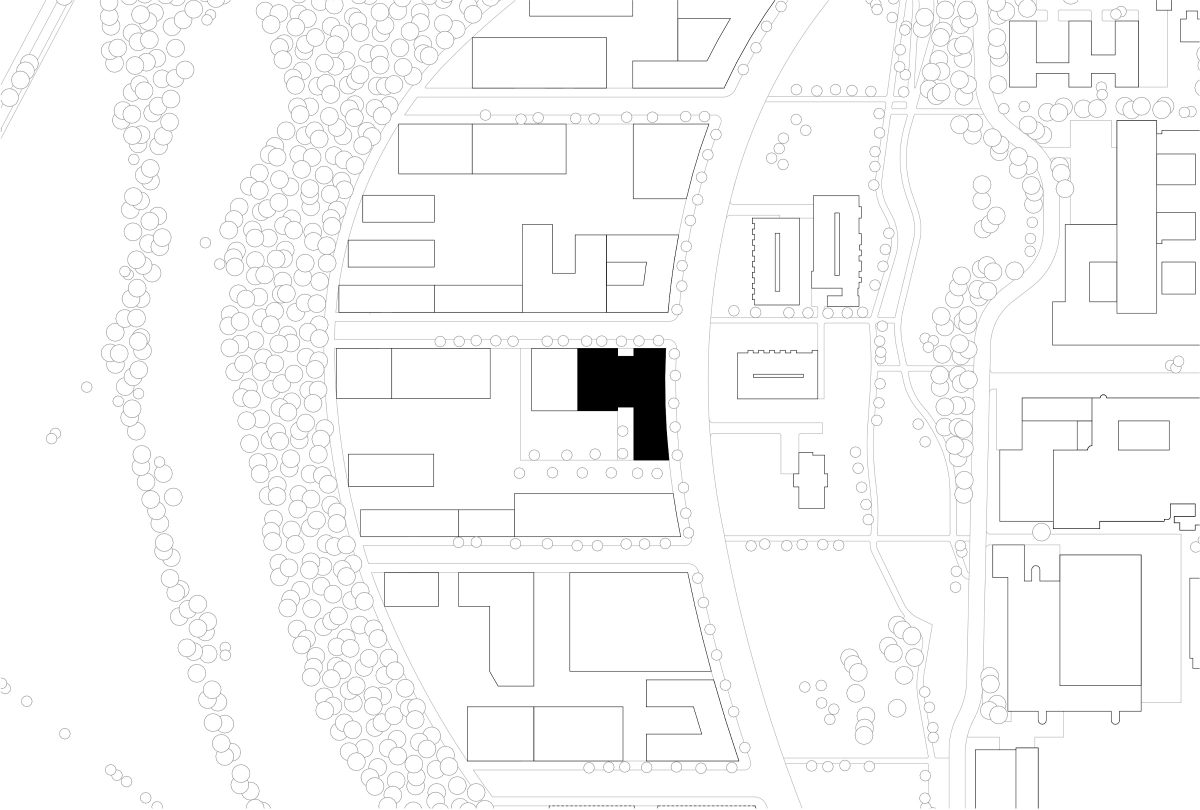
-
Project type
New construction
-
Purpose
Research building
-
GFA
6,130 m²
-
Project status
Planning stage
-
Period
2022- 2027
-
Procurement
Public tendering process
-
Awards
Contract awarded
-
Construction cost
38,300,000 €
-
Service phases
1 – 4 (HOAI)
-
Project team
Ilona Ahmeti
Susanne Boss
Thomas Emmrich
Nadine Kopetzki
Eva Poggenklaß
Loana Sahihi
Dragana Savic
Oya Sönmez
-
Renderings
